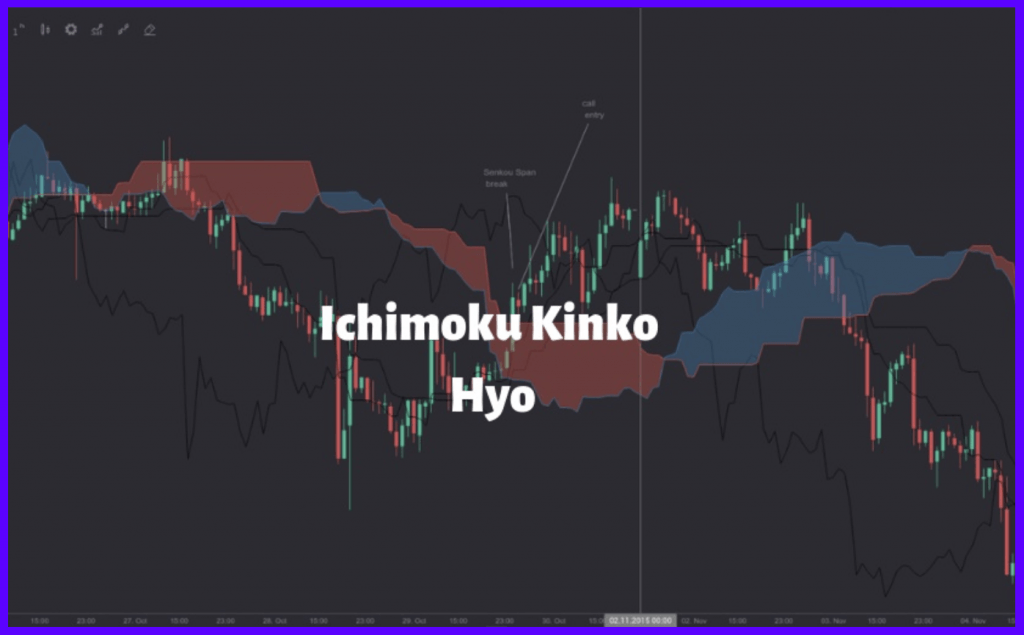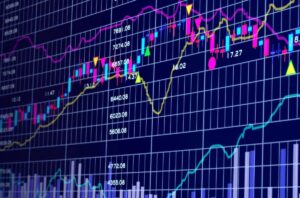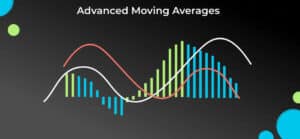Ichimoku Kinko Hyo, Ichimoku Kinko Hyo, Ichimoku Kinko Hy
Yes, you are still in the correct location. You’re still at the School of Pipsology, not a Japanese pop or anime website.
“Ichimoku Kinko Hyo” isn’t Japanese for “May the pips be with you,” yet it can still assist you in grabbing those pips.
Ichimoku Kinko Hyo (IKH) is a price momentum indicator that forecasts future levels of support and resistance.
That’s three in one for you! It’s also worth noting that this indicator is most commonly utilized on JPY pairs.
What Does Itchimoku Mean?
To expand your Japanese vocabulary, the term ichimoku means “a look,” kinko means “equilibrium,” and hyo means “chart.”
When you put it all together, ichimoku kinko hyo means “a peek at an equilibrium chart.”
What does it all imply, exactly?
It could be better to explain things with a chart…

Whoops. That didn’t help matters. With a few more lines, it will look like a seismograph.
Let’s break down the components of Ichimoku Kinko Hyo so it’s easier to grasp before you dismiss it as gibberish.
But, before we do that, there are a few things you should be aware of concerning this indicator:
Ichimoku can be applied to any tradeable asset in any time frame. (Originally, it was used to trade rice!)
In both rising and declining markets, Ichimoku can be utilized.
So, when are you unable to use Ichimoku?
There is no discernible pattern.
When the market is trading sideways, choppy, or trendless, it is said to be trendless.
The time you see the price oscillate on both sides of the cloud, you know it’s trendless.
That’s it! Excellent.
What Are The Lines For?
Let’s see if we can figure out what each of the lines is for.
Kijun Sen (blue line): This is calculated by averaging the highest high and lowest low for the previous 26 periods, and is also known as the standard line or baseline.
Tenkan Sen (red line): Also known as the turning line, the Tenkan Sen is calculated by averaging the highest high and lowest low for the previous nine periods.
The Chikou Span (green line) is referred to as the lagging line. It’s today’s closing price, but it’s been plotted 26 periods back.
The first Senkou line (orange lines) is calculated by averaging the Tenkan Sen and the Kijun Sen and shown 26 periods ahead.
The second Senkou line is calculated by averaging the highest high and lowest low for the previous 52 periods, then plotting them 26 periods ahead.

Is that clear? It isn’t required for you to remember how each of the lines is calculated.
What matters most is that you understand how to read these fancy lines.
How to Trade Using Ichimoku Kinko Hyo
Senkou
First, let’s look at the Senkou span.
The top line serves as the first support level if the price is over the Senkou span, while the bottom line serves as the second support level.
The bottom line serves as the first resistance level when the price is below the Senkou span, while the top line serves as the second resistance level. Is that clear?
Kijun Sen
Meanwhile, the Kijun Sen serves as a predictor of price movement in the future.
If the price is over the blue line, it is possible that it will continue to rise.
If the price falls below the blue line, it may continue to fall.
Tenkan Sen
The Tenkan Sen is a trend indicator for the stock market
It signifies that the market is trending whether the red line moves up or down.
It indicates that the market is ranging if it travels horizontally.
Chikou Span
Finally, a buy signal is generated when the Chikou Span or the green line crosses the price in a bottom-up direction.
It’s a sell indication if the green line crosses the price from the top down.
Here’s another version of the line-filled chart, this time incorporating trade signals:

At first glance, it appears difficult, but this baby has support and resistance levels, crossovers, oscillators, and trend indicators all in one package! Isn’t it incredible?
Ichimoku can be utilized in every market and in any timeframe as a trend tracking indicator.
It encourages trading in the direction of the trend, not against it, regardless of the market.
Moreover, it can help you avoid entering the wrong side of the market by observing trends.
Okay, we’ve already gone over a plethora of signs. Let’s see how we can combine what you’ve just learned…
Looking for a highly rated forex fund manager?
Fx Pips Guru has a strong group of forex experts who are managing forex accounts of our clients from different brokers dedicatedly. Just hire our forex fund managers here: https://www.fxpipsguru.com/forex-fund-manager/.




